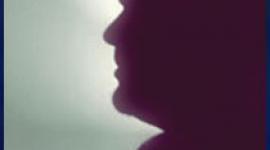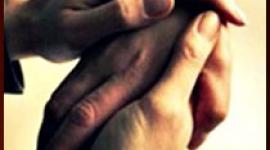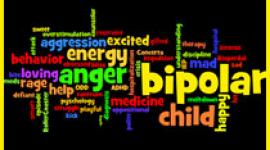Bipolar Disorder in Children and Adolescents: Medications, ECT
The treatment of bipolar disorder in children and adolescents may include the use of mood stabilizers, hospitalization, and ECT (electroconvulsive therapy).
Medical Care: The treatment and management of bipolar disorder are complicated; hence, most children and adolescents with this diagnosis require referral to a psychiatrist specializing in this age group. In general, a team approach is used in the clinical setting because multiple factors need to be addressed, including medication, family issues, social and school functioning, and, when present, substance abuse. In general, the treatment of bipolar disorder may be thought of as a 4-phase process: (1) evaluation and diagnosis of presenting symptoms, (2) acute care and crisis stabilization for psychosis or suicidal or homicidal ideas or acts, (3) movement toward full recovery from a depressed or manic state, and (4) attainment and maintenance of euthymia.
 The treatment of adolescent or juvenile patients with bipolar disorder is modeled after treatments provided to adult patients, since no good controlled studies of bipolar treatment modalities in this age group are available to provide evidence-based medical care. Nonetheless, bipolar disorders in adolescents and children often present to clinicians at times of family or youth despair or family crises surrounding the youth's behaviors. In such critical times, inpatient care often is indicated to assess the patient, diagnose the condition, and ensure the safety of the patient or others. Hospitalization is necessary for most patients in whom psychotic features are present and in almost all patients in whom suicidal or homicidal ideations or plans are present. Inpatient care always should be considered for young persons who have suicidal or homicidal ideation and have access to firearms in their homes or communities and for those who abuse substances, particularly alcohol.
The treatment of adolescent or juvenile patients with bipolar disorder is modeled after treatments provided to adult patients, since no good controlled studies of bipolar treatment modalities in this age group are available to provide evidence-based medical care. Nonetheless, bipolar disorders in adolescents and children often present to clinicians at times of family or youth despair or family crises surrounding the youth's behaviors. In such critical times, inpatient care often is indicated to assess the patient, diagnose the condition, and ensure the safety of the patient or others. Hospitalization is necessary for most patients in whom psychotic features are present and in almost all patients in whom suicidal or homicidal ideations or plans are present. Inpatient care always should be considered for young persons who have suicidal or homicidal ideation and have access to firearms in their homes or communities and for those who abuse substances, particularly alcohol.
Depressive episodes are not uncommonly the first presentation of bipolar disorders in youths. In these situations, the clinician is wise to recall that approximately 20% of adolescents who have a diagnosis of depression later reveal manic symptoms; thus, antidepressant therapy in a depressed youth should be initiated with a warning to the patient and family of the possibility of later development of mania symptoms. If history of a manic state is known or suggested in a currently depressed patient, then a mood stabilizer must be started first. Once a therapeutic level and response to the mood stabilizer are attained, an antidepressant may be considered as additional treatment needed for the current state of depression.
Inpatient treatment usually requires locked-unit care to assist in safety regulation. Rarely are young persons physically restrained in hospitals, but seclusion rooms remain available in the event of severely agitated states that may culminate in threats or overt expression of physical aggression to self or others.
Mood stabilizers, such as lithium carbonate, sodium divalproex, or carbamazepine, are the mainstays of treatment of patients with bipolar disorder. Additionally, an antipsychotic agent, such as risperidone or haloperidol, may be used if psychotic features or aggressive agitation is present. Lastly, benzodiazepines may be used to improve sleep and to modulate agitation during hospitalization. Once symptoms of psychosis, suicidality, or homicidality are absent or are sufficiently diminished to a safe and manageable level, the patient is discharged to outpatient care.
Although electroconvulsive therapy (ECT) is well documented as an effective and safe treatment option in patients with depressive or psychotic states, most clinicians do not consider this a first-line intervention in children or adolescents. ECT often is initially administered on an inpatient basis because it most frequently is used in severe or refractory cases, and these patients are likely to require hospitalization more often. Still, ECT may be initiated at any point in treatment because each ECT treatment can be performed in a day treatment setting, usually requiring at least a 4-hour visit for the pre-ECT preparations, delivery of the ECT therapy, and monitoring afterward during the recovery time from both the ECT session and anesthesia. All ECT treatments require the presence of an anesthesiologist or anesthetist throughout the administration of therapy.
ECT has been demonstrated to be both safe and therapeutic in adolescents and children. One favorable aspect of ECT is its more rapid onset of therapeutic response versus medications, specifically in days rather than weeks. One drawback to ECT is the associated memory loss surrounding the time just before and after treatments. An ECT treatment episode may involve 3-8 or more sessions, usually at a rate of 1 session every other day or 3 sessions per week. Despite the rapid effect of ECT on mood and psychotic symptoms, medications are still required in the maintenance phase of treatment.
Sources:
- Kowatch RA, Bucci JP. Mood stabilizers and anticonvulsants. Pediatr Clin North Am. Oct 1998;45(5):1173-86, ix-x.
- Kowatch RA, Fristad M, Birmaher B, et al. Treatment guidelines for children and adolescents with bipolar disorder. J Am Acad Child Adolesc Psychiatry. Mar 2005;44(3):213-35.
next: Bipolar Disorder in Children and Adolescents: Patient Evaluations
~ bipolar disorder library
~ all bipolar disorder articles
APA Reference
Staff, H.
(2008, October 17). Bipolar Disorder in Children and Adolescents: Medications, ECT, HealthyPlace. Retrieved
on 2025, December 17 from https://www.healthyplace.com/bipolar-disorder/articles/bipolar-disorder-in-children-and-adolescents-medications-ect



